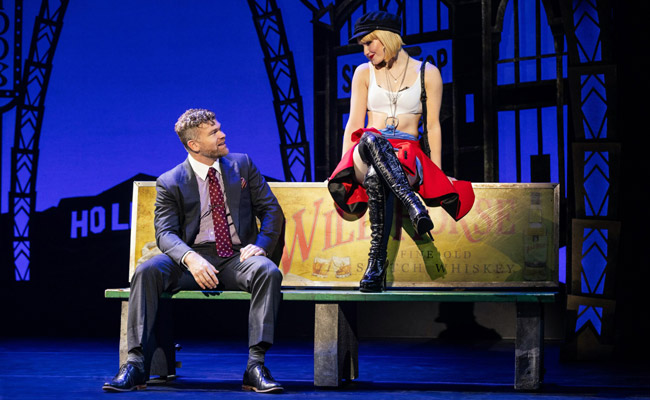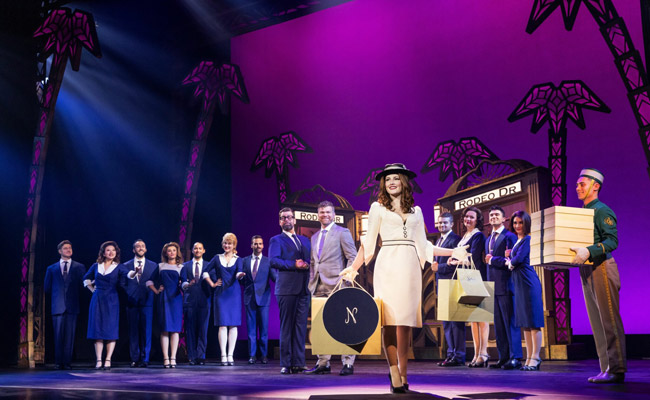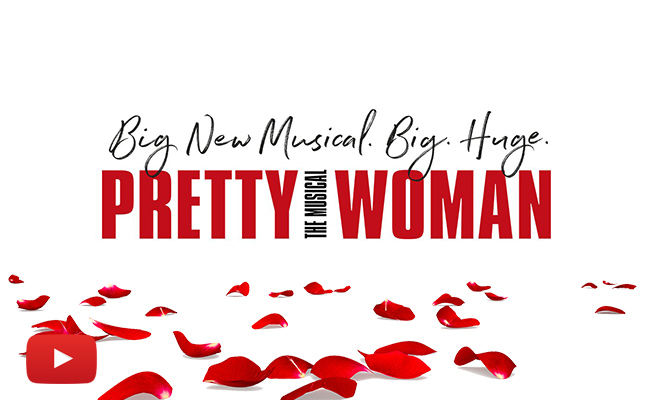
Matthew Murphy
Before your performance of the Pretty Woman National Tour (now playing at DC’s National Theatre) even begins, the Playbill sets expectations.
SETTING: Hollywood – Once Upon a Time in the 1980s
A lot has changed in the world since the release of the original 1990 movie Pretty Woman, the Garry Marshall-directed, Richard Gere and Julia Roberts vehicle. Those were the days when a movie like that could gross almost half-a-billion dollars, finish above movies like Dances with Wolves and Total Recall at the box office, and garner Academy Award nominations.
Those days are long gone. And the story about a hooker with a heart of gold doesn’t play the same these three decades since, so they have to set expectations: this is a fairy tale. It’s a fantasy world from ‘Once Upon a Time’. It may feel like places and people and things we know, but it’s not. If you don’t help yourself, you’ll go crazy thinking about the gender politics and cultural sensitivities that no longer play like they used to. So they ask you to just enjoy it as it is.
As many others have pointed out, that is entirely dependent on how much you love the movie. It’s just about all there, from the fan-favorite lines to the iconic looks to all the characters you know and maybe love.
The fairy tale’s damsel-in-distress is prostitute Vivian (a budding Ellie Baker). She even admits it herself in an Act II speech lifted more-or-less directly from the film (the musical’s book by original director Marshall and original screenwriter J.F. Lawton is, in many cases, word-for-word) when she admits that she ‘wants the fairy tale.’ She grew up without much and left her Southern podunk for half a block of Hollywood Boulevard. But she’s looking for the knight to come save her.
That knight in shining armor is Edward (a rarely excitable Chase Wolfe), the stuffy and emotionally stunted millionaire who’s much more at home on Rodeo Drive than on the Boulevard. He’s closing a big deal this week and when the charming Vivian offers up directions for twenty bucks, that quickly becomes an hour of her time for $100, an overnight stay in his ritzy Beverly Wilshire penthouse for her rent-covering $300, and ends with her becoming his ‘beck-and-callgirl’ for the rest of the week, totaling a negotiated three grand.
‘I would have stayed for two thousand,’ she quips.
‘I would have paid four,’ he says, closing his checkbook.
Rescued? Not so fast.

Matthew Murphy
No fairy tale is complete without a Fairy Godmother and Pretty Woman offers a character called the Happy Man (a certainly happy Adam du Plessis), a chameleon character who operates as the show’s narrator, the hotel concierge, and a handful of other roles. While Edward’s busy at work, he’s the first person to accept Vivian and help her. He’s not only discreet about her very existence at the hotel, but he steps in to help when she needs a little bippity-boppity. He orders her some nice clothes, teaches her how to ballroom dance, and sets her on her way to the Ball.
Or just a dinner date with Edward.
But you know this if you’ve seen the movie. Pretty much everyone has, which is good for the show’s producers because this is squarely aimed at fans of the film.
Love that character? Wonderful – they say all the same lines. ‘You work on commission, right? Big mistake. Big. Huge!’ and ‘I appreciate this whole seduction scene you’ve got going, but lemme give you a tip: I’m a sure thing, okay?’ and ‘I’m not trying to land him. I’m just using him for sex,’ all come out of Vivian’s mouth because they must. And that’s good because those lines still work.
Ooh and aah over those iconic looks? Baker wears them all, including an ill-styled Julia Roberts-natural hair lookalike wig, (I don’t think the actress playing Vivian is supposed to look better in her first, blonde-wigged outfit,) and makes a moment of all your favorite outfits, from the polo match polka dots to the black-and-white Rodeo Drive spending spree suit to the red dress.
Remember that great moment? They’re just about all there – except the bathtub scene, which seems to have existed in the Broadway version and excised for the National Tour (too big a setpiece?).

Matthew Murphy
It’s all still Pretty Woman, now with music and lyrics from Bryan Adams and Jim Vallance. Adams is a clear choice timeline-wise, as the movie tries to make the jump to the ’90s while still reeling from the ’80s, Adams’ discography does the same. Some songs are better than others, while the best tune in the whole thing is Roy Orbison’s ‘Oh, Pretty Woman’ which does, lucky for us, make an appearance after being teased throughout the show.
Tony Winner Jerry Mitchell directed and choreographed the piece for Broadway and his work has been recreated for this non-Equity tour by D.B. Bonds and Rusty Mowery respectively, but it’s difficult to tell what is Mitchell’s work and what has been altered for tour life. One such change comes in the scenic design. Originally designed by David Rockwell, his sets are altered by Christine Peters in typical tour fashion.
If you bought a ticket to see Pretty Woman live, you’ll get that with little to no contention. That’s perhaps the strongest thing about the show: it promises and delivers. It’s still that recognizable fairy tale, the one about the darling knight who saves the locked-away princess.
But unlike a classic fairy tale, this story doesn’t end when he saves her. Edward asks, in dialogue straight from the movie, ‘What happened after he climbed up the tower and rescued her?’
‘She rescues him right back,’ smirks the darling Vivian.
Pretty Woman runs about 2 hours 45 minutes with one intermission. Recommended for ages 12 and up. The show does include the use of a particular word in the context of the era that some may find offensive.
Pretty Woman runs through December 17 at Washington DC’s National Theatre. Other cities on the schedule include Santa Barbara, Albuquerque, Reno, Fresno, Detroit, Boston, Montreal, Chicago and more. Visit the official website for more information. Use our Ticketmaster link to purchase tickets.
Pretty Woman – North American Tour


